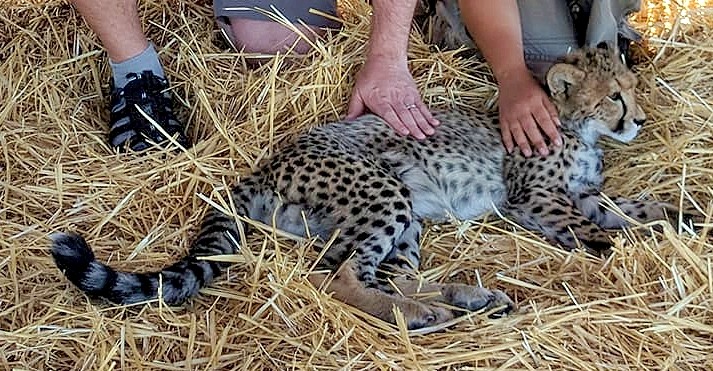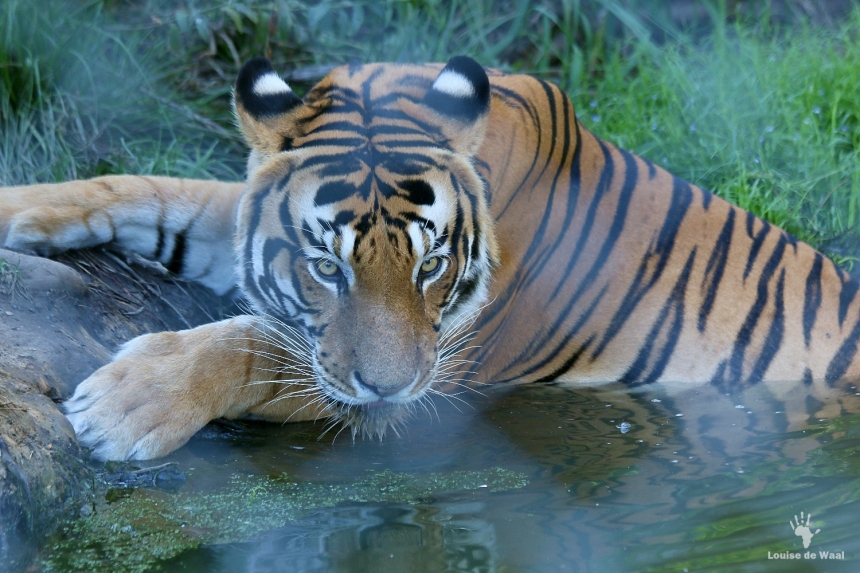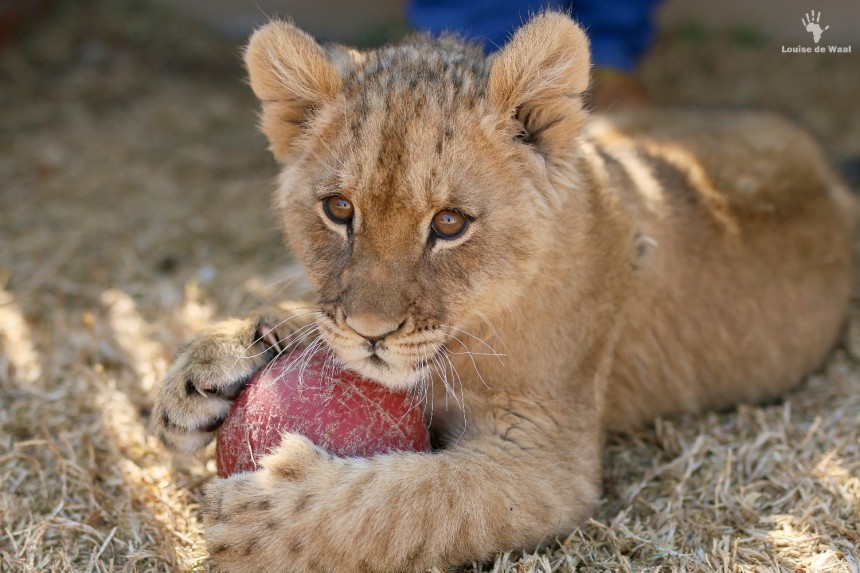The role of ambassador species in wildlife tourism
Non-consumptive wildlife tourism is an important part of our industry that represents a wide variety of activities, from photographic safaris in national parks and reserves, to boat-based whale watching, and visiting captive wildlife facilities, such as zoos, sanctuaries, rehabilitation centres, and breeding farms.
The latter category, captive wildlife facilities, is widely represented in South Africa and often have a multitude of objectives, including a role of entertainment, conservation, and education. The order of priority of these goals often creates confusion, especially when it comes to the role of ambassador species in such facilities.
What are Ambassador Species?
Ambassador or flagship species is generally known as a popular, charismatic species that serves as a symbol and rallying point to stimulate conservation awareness and pro-conservation behaviour, translated into actions such as philanthropy and volunteering.
To increase the public appeal of ambassador species, charismatic animals, such as big cats, apes and elephants, are used with a growing trend for hands-on experiences and close-up photo opportunities. In South Africa, we see more and more captive wildlife facilities offering such encounters, especially with cheetahs, lions, tigers and elephants.

“Advocates of zoos and animal-based attractions often argue that having ambassador species is an environmentally responsible act since they preserve species that would otherwise become extinct”, say Amir Shani and Abraham Pizam in their paper “Towards an ethical framework for animal-based attractions”. “Followers of the animal welfare position will also accept most tourist activities that involve the use of animals, as long it is done in a “humane” way with maximum consideration to the animals’ well-being”.
In light of a growing public awareness towards animal welfare and rights, i.e. the acceptance that animals are sentient beings with the capacity to feel both physical and psychological pain, it is vital that our tourism industry starts looking more closely at the ethical aspects of hands-on captive wildlife encounters.
In addition, it is suggested that by putting more emphasis on the entertainment value might even detract from the environmental and conservation message that these wildlife facilities want to convey.
It is important to understand that wildlife facilities rely on the paying public to fund their operations, including the health and well-being of the animals, and thus finding innovative approaches for combining entertainment, education and welfare concerns is even more important.

Hands-on Interactions with Ambassador Species – Does the End Justify the Means?
However, we need to ask some vital questions around the type of activities that many captive wildlife facilities offer, such as petting, touching, riding, and walking with ambassador species in order to provide close-up photo opportunities with these charismatic animals.
- Is it ethical to use these ambassador species in such ways?
- Do we need to interact this closely to achieve the much-needed awareness of the conservation plight of these species?
- Could we be equally (or more) successful in educating the public, if we allow the ambassadors to behave more naturally at a distance?
- Are we confusing entertainment with education?
Even though there is also a potential safety concern when allowing the public to interact with apex predators, I will leave this issue out of the discussion here.

As many studies have shown, there is no doubt that wildlife encounters can evoke lasting memories and transformative experiences, and often a single species can be the sole motivation for visiting a destination.
A wildlife experience has the power to facilitate four levels of response in a visitor:
- Sensory impressions – what they actually see and hear
- Emotional affinity – what they feel
- Reflective response – their thoughts
- Behavioural response – what they do about it
Conservation psychology studies have shown that for example a visit to the zoo can start to heal a person’s disconnect with nature and can create an emotional connection with a species strong enough to take some pro-conservation action.
A study in Queensland (Australia) found that visitors to both captive and non-captive wildlife tourism destinations have similar levels of environmental knowledge, interests and behaviour. However, their motivational and experiential differences sets them apart. While visitors of non-captive wildlife sites put a greater emphasis on the learning aspects, visitors to captive facilities find the social, recreational, and entertainment side more important.
Their findings also indicate that both captive and non-captive wildlife tourism organisations can do more to increase a visitor’s understanding of conservation issues and their adoption of pro-conservation behaviour. The key to unlocking this potential is to encourage visitors to reflect on their experiences.
How to Design Wildlife Tourism Sites to Successfully Achieve Experiential Learning?
How do we unlock a cycle of experiential learning, i.e. experiencing, reflecting, thinking and acting? What design elements does it require to accomplish this potential?
In order to enhance the visitor’s experience, evoke powerful memories, and encourage visitors to adopt environmentally responsible behaviour in response to their visit, captive wildlife facilities should be more creative with their interpretive designs, instead of opting for a quick fix by offering hands-on wildlife interactions.

Captive wildlife facilities are likely to be more successful in fulfilling the educational and awareness roles they have set themselves by among others:
- Designing interpretive experiences that incorporate multiple senses, especially sight, sound, smell and touch. Rather than touching the life animal, this can be achieved with for example touch tables that contain interpretive materials, such as skulls, teeth, fur, and food.
- Providing opportunities for visitors to get as close as possible to the animals, without compromising their well-being, or view the wildlife from a new and different perspective, like these otter tubes.
- Using interpretive commentaries and signage to reinforce visitor’s sense of wonder, awe, excitement and privilege.
- Encouraging visitors to use their imagination to enter into the animal’s world, to identify with individuals, and to experience empathy. The role of the guide/interpreter is extremely important in achieving this successfully.
- Providing information about the threats faced by the wildlife observed, especially those due to human actions.
- Giving examples of how visitors’ everyday behaviour can impact both positively and negatively on the animal(s) observed, and wildlife in general.
- Giving examples of practical and achievable steps an individual can take to contribute to the welfare of the animals observed, wildlife in general, and to their own local environment.
- Providing (online) resources that visitors can access post-visit to follow up on particular interests, prolong their learning, and maintain their motivation to act.
By putting less emphasis on the mere entertainment value of captive wildlife and more on the unique storytelling around the species conservation, threats and challenges, we can not only enhance the visitor’s experience, but also improve animal welfare and extend the educational impact of the activity. A win-win for all by advocating a #HandsOffOurWildlife policy.



Pingback: Captive Bred Cheetahs – an epidemic in South Africa? | Green Girls in Africa
Pingback: Cheetah Outreach: Does the End Justify the Means? | Green Girls in Africa
Pingback: Taken away from their mothers to be exported for zoological reasons — eTN: Global Travel & Tourism News